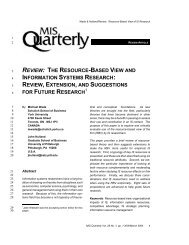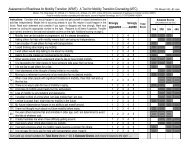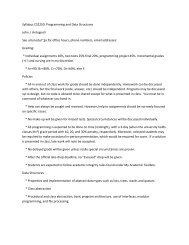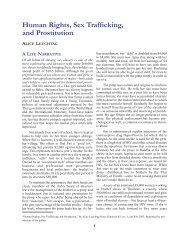The Cucurbitaceae of India: Accepted names, synonyms ...
The Cucurbitaceae of India: Accepted names, synonyms ...
The Cucurbitaceae of India: Accepted names, synonyms ...
You also want an ePaper? Increase the reach of your titles
YUMPU automatically turns print PDFs into web optimized ePapers that Google loves.
<strong>The</strong> <strong>Cucurbitaceae</strong> <strong>of</strong> <strong>India</strong> 103<br />
Misapplied <strong>names</strong> and species erroneously or doubtfully recorded from <strong>India</strong>:<br />
Bryonia dioica Jacq.<br />
Comment: <strong>The</strong> distribution range given for B. dioica by Chakravarty (1982) “Afganistan,<br />
Iran, Iraq, Tropical Africa, Syria, Palestine” is based on an exceedingly broad<br />
concept <strong>of</strong> this species. A narrower circumscription (Jeffrey, 1969) is supported by<br />
nuclear and plastid molecular data (Volz and Renner, 2009). Bryonia dioica then<br />
occurs from Spain throughout Eurasia south to Algeria and Morocco, Sardinia,<br />
Corsica, and the Greek Peninsula and east to mid-Poland; a distribution map is<br />
shown in Volz and Renner (2009).<br />
Bryonia multiflora Boiss. & Heldr.<br />
Comment: Listed by Chakravarty (1982) based on misidentification <strong>of</strong> B. monoica (see<br />
under that species).<br />
Cayaponia laciniosa (L.) C. Jeffrey, Kew Bull. 15(3): 346. 1962.<br />
Bryonopsis laciniosa (L.) Naudin, Ann. Sci. Nat., Bot. sér. 5: 6. 1866.<br />
Bryonia laciniosa L., Sp. Pl. 2: 1013. 1753. Type: “Habitat in Zeylona.” (Country<br />
assignment in error). Lectotype: Cultivated in the Netherlands, Hartekamp in<br />
1736–1737, Herb. Clifford: 452, Bryonia 1 (BM-000647451), designated by Jeffrey<br />
(1962).<br />
Comment from M. Nee, New York Botanical Garden, pers. comm. to S. Renner in<br />
2010: In 1962, Jeffrey thought that C. laciniosa was the correct name for C. racemosa<br />
(Mill.) Cogn. By 1971, however, he decided that C. laciniosa was a local<br />
Jamaican endemic. <strong>The</strong> fullest description would be from Hort. Cliff. 452 based<br />
on living plants that Linnaeus saw; Linnaeus erroneously equated syntypes <strong>of</strong> this<br />
plant with literature <strong>of</strong> a different genus and species from Asia.<br />
Citrullus ecirrhosus Cogn., Verh. Bot. Vereins Prov. Brandenburg 30:151. 1888.<br />
Colocynthis ecirrhosus (Cogn.) Chakrav., Science & Culture 15: 32. 1949.<br />
This species is from Africa and not a synonym <strong>of</strong> Benincasa fistulosa.<br />
Hemsleya graciliflora (Harms) Cogn. in Engl. Pflanzenr. IV. 275, 1 (Heft 66): 24, f.<br />
7A–H. 1916.<br />
Alsomitra graciliflora Harms, Bot. Jahrb. Syst. 29(5): 602. 1901.<br />
Syntypes: China, W Wenchuan, Niangtzuling, BvR 3134, 3136, Hubei, Henry 4452,<br />
Sichuan, Wenchuan, Niangziling; von Rosthorn 3134, 3136 (B, destroyed in WWII)<br />
Comment: <strong>Accepted</strong> for <strong>India</strong> by Chakravarty (1982), while Jeffrey (1980) states<br />
that records for <strong>India</strong> are based on misidentifications <strong>of</strong> Gomphogyne macrocarpa<br />
(Hemsleya macrocarpa).
















